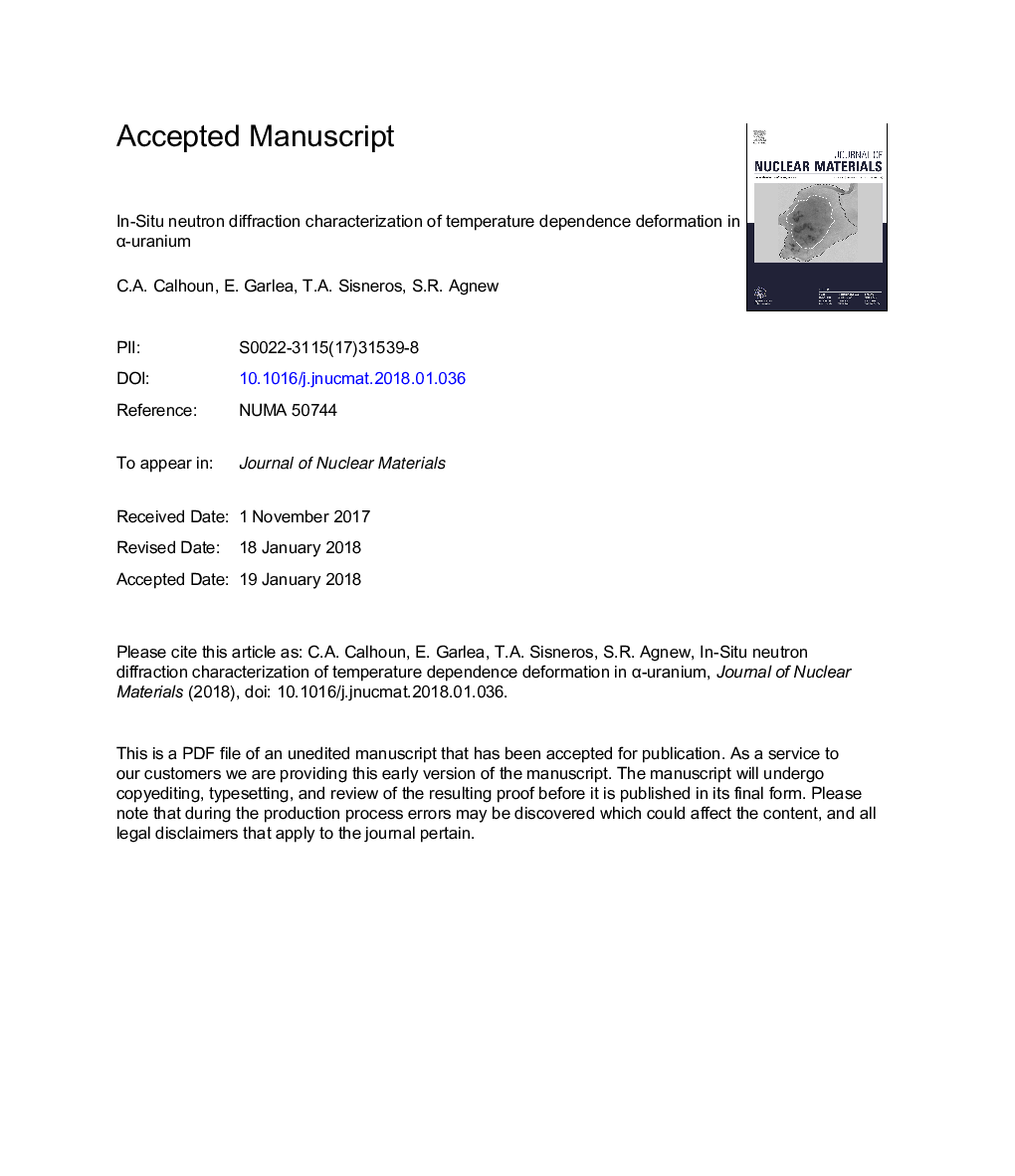| Article ID | Journal | Published Year | Pages | File Type |
|---|---|---|---|---|
| 7963346 | Journal of Nuclear Materials | 2018 | 23 Pages |
Abstract
In-situ strain neutron diffraction measurements were conducted at temperature on specimens coming from a clock-rolled α-uranium plate, and Elasto-Plastic Self-Consistent (EPSC) modeling was employed to interpret the findings. The modeling revealed that the active slip systems exhibit a thermally activated response, while deformation twinning remains athermal over the temperature ranges explored (25-150â¯Â°C). The modeling also allowed assessment of the effects of thermal residual stresses on the mechanical response during compression. These results are consistent with those from a prior study of room-temperature deformation, indicating that the thermal residual stresses strongly influence the internal strain evolution of grain families, as monitored with neutron diffraction, even though accounting for these residual stresses has little effect on the macroscopic flow curve, except in the elasto-plastic transition.
Related Topics
Physical Sciences and Engineering
Energy
Nuclear Energy and Engineering
Authors
C.A. Calhoun, E. Garlea, T.A. Sisneros, S.R. Agnew,
